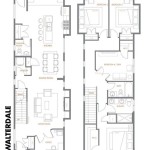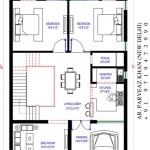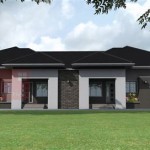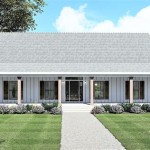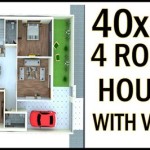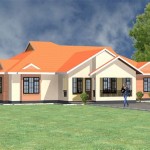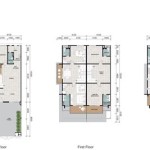Under 1500 Sq Ft House Plans: Maximizing Space and Efficiency
Designing a home, regardless of its size, requires careful consideration of various factors to ensure functionality, comfort, and aesthetic appeal. Under 1500 sq ft house plans present a unique set of challenges and opportunities. These plans necessitate meticulous space planning and creative design solutions to accommodate essential living areas while maintaining a sense of openness and avoiding a cramped feeling. The popularity of smaller homes is on the rise due to factors such as affordability, reduced environmental impact, and a desire for simplified living. This article explores the key considerations and design strategies involved in creating effective and appealing house plans within the 1500 sq ft constraint.
The advantages of choosing an under 1500 sq ft house extend beyond initial cost savings. Property taxes, utility bills, and maintenance expenses are generally lower for smaller homes. Furthermore, smaller spaces often encourage a more minimalist lifestyle, prompting homeowners to prioritize possessions and reduce clutter. This can lead to a more organized and peaceful living environment. However, the success of a small house plan hinges on smart design choices that optimize every square inch of available space.
Before embarking on the design process, it's crucial to define individual needs and priorities. Consider the number of occupants who will reside in the house, their lifestyle habits, and any specific requirements such as home offices, hobby rooms, or accessibility features. A detailed needs assessment will provide a solid foundation for making informed decisions about room sizes, layouts, and storage solutions. Neglecting this preliminary step can lead to dissatisfaction and compromises down the line.
When working with a limited footprint, an open floor plan is often the most effective way to create a sense of spaciousness. Combining the living room, dining area, and kitchen into a single, unified space eliminates unnecessary walls and allows natural light to penetrate throughout the home. Strategic placement of furniture and the use of area rugs can help define individual zones within the open area without sacrificing the overall feeling of openness.
Storage is paramount in small homes. Incorporating built-in storage solutions, such as shelving units, cabinets, and window seats with storage compartments, maximizes vertical space and minimizes clutter. Utilizing the space beneath stairs, in hallways, and above doorways for storage can also prove invaluable. Multifunctional furniture, such as sofa beds and coffee tables with hidden storage, offers additional space-saving options.
Natural light plays a crucial role in making a small home feel larger and more inviting. Large windows, skylights, and strategically placed mirrors can amplify natural light and create a brighter, more cheerful atmosphere. Conversely, poorly lit spaces can feel cramped and depressing. Attention to window placement and the use of light-colored paint and finishes can significantly enhance the perceived size of a room.
The selection of building materials and finishes also influences the overall aesthetic and functionality of a small home. Durable, low-maintenance materials are ideal for minimizing upkeep and ensuring longevity. Light-colored walls and flooring tend to reflect light and create a sense of spaciousness, while darker colors can make a room feel smaller and more enclosed. Choosing materials and finishes that complement each other and reflect the homeowner's personal style is essential for creating a cohesive and inviting living environment.
Furthermore, consider the exterior design of the house in relation to its surroundings. A well-designed exterior can enhance curb appeal and integrate the house seamlessly into its environment. Landscaping, outdoor lighting, and the use of complementary materials can contribute to a welcoming and aesthetically pleasing exterior. A small patio or deck can extend the living space outdoors, providing a valuable area for relaxation and entertainment.
Key Point 1: Efficient Floor Plan Design
The core of a successful under 1500 sq ft house plan lies in the efficiency of its floor plan. Careful consideration must be given to the arrangement of rooms and the flow of traffic throughout the house. Minimizing hallways and maximizing the use of open spaces are essential strategies. The kitchen, often considered the heart of the home, should be strategically located to allow for easy access to the living and dining areas. The bedrooms should be designed to provide privacy and tranquility, while bathrooms should be conveniently located and efficiently laid out. A well-designed floor plan will minimize wasted space and maximize functionality, ensuring that every square inch of the house is utilized effectively.
Prioritizing essential rooms is crucial. If a large master bedroom is a non-negotiable item, compromises may need to be made in the size of secondary bedrooms or living areas. Similarly, if a dedicated home office is required, careful planning is necessary to ensure that it doesn't encroach excessively on other living spaces. A realistic assessment of needs and priorities will guide the floor plan design process and ensure that the house meets the homeowner's specific requirements.
The placement of doors and windows also plays a significant role in the perceived size and functionality of a room. Sliding doors and pocket doors can save space compared to traditional swing doors. Windows should be strategically placed to maximize natural light and ventilation. Careful attention to these details can significantly enhance the overall livability of the house.
Considering the orientation of the house on the lot is another important factor in floor plan design. Optimizing the house's exposure to sunlight can reduce energy consumption and enhance natural lighting. A south-facing orientation is generally ideal for maximizing solar gain in colder climates, while east and west orientations may require shading to prevent overheating. Taking into account the local climate and site conditions will ensure that the house is energy-efficient and comfortable year-round.
Key Point 2: Maximizing Storage Opportunities
In a small home, storage is not merely desirable—it is essential. Clever storage solutions can transform a potentially cluttered and cramped living space into an organized and functional home. The key is to think vertically and to identify unconventional storage opportunities throughout the house. Built-in shelving, cabinets, and drawers can maximize vertical space and provide ample storage for books, clothing, and other belongings. Under-stair storage, often overlooked, can be transformed into valuable storage space for seasonal items or household supplies. Utilizing the space above doorways for storage is another clever way to maximize vertical space.
Multifunctional furniture is a valuable asset in small homes. Sofa beds provide extra sleeping space for guests, while coffee tables with hidden storage offer a convenient place to store blankets, pillows, or other items. Ottomans with storage compartments can serve as both seating and storage. Investing in multifunctional furniture can significantly reduce clutter and maximize the use of available space.
Consider utilizing wall-mounted organizers in closets and pantries to maximize storage capacity. Adjustable shelving allows for customization to accommodate items of different sizes. Wall-mounted hooks and racks can be used to store coats, hats, and other accessories. These organizational tools can help keep closets and pantries tidy and efficient.
In the kitchen, pull-out drawers and organizers can maximize storage and accessibility. Vertical dividers can be used to store baking sheets and cutting boards. A lazy Susan can make it easier to access items stored in corner cabinets. These organizational tools can help keep the kitchen clutter-free and efficient.
Key Point 3: Emphasizing Light and Openness
Creating a sense of light and openness is crucial for making a small home feel larger and more inviting. Natural light is a powerful tool for enhancing the perceived size of a room. Large windows, skylights, and strategically placed mirrors can amplify natural light and create a brighter, more cheerful atmosphere. Light-colored paint and finishes reflect light and create a sense of spaciousness, while darker colors can make a room feel smaller and more enclosed.
An open floor plan is another effective way to create a sense of spaciousness. Combining the living room, dining area, and kitchen into a single, unified space eliminates unnecessary walls and allows natural light to penetrate throughout the home. Strategic placement of furniture and the use of area rugs can help define individual zones within the open area without sacrificing the overall feeling of openness.
Utilizing vertical space can also create a sense of openness. High ceilings, even if only in certain areas of the house, can make a room feel larger and more airy. Tall windows can also draw the eye upward and create a sense of verticality.
Minimizing clutter is essential for maintaining a sense of openness. A cluttered room will always feel smaller and more cramped than an organized room. Regular decluttering and the use of storage solutions can help keep the house tidy and organized. The strategic use of mirrors can also create the illusion of more space and light. Placing a large mirror on a wall can visually double the size of a room.

Our Picks 1 500 Sq Ft Craftsman House Plans Houseplans Blog Com

3 Bedrm 1500 Sq Ft European House Plan 123 1031

Our Picks 1 500 Sq Ft Craftsman House Plans Houseplans Blog Com

10 Best 1500 Sq Ft House Plans As Per Vastu Shastra

One Story House Plans 1500 Square Feet 2 Bedroom Sq Ft Traditional

House Plans Under 1500 Square Feet

10 Best 1500 Sq Ft House Plans As Per Vastu Shastra

Cottage Style House Plan 3 Beds 2 Baths 1500 Sq Ft 44 247 Floorplans Com Small Floor Plans

Our Picks 1 500 Sq Ft Craftsman House Plans Houseplans Blog Com

How Do I Build The Best Home In An Area Of 1500 Square Feet 30x50

